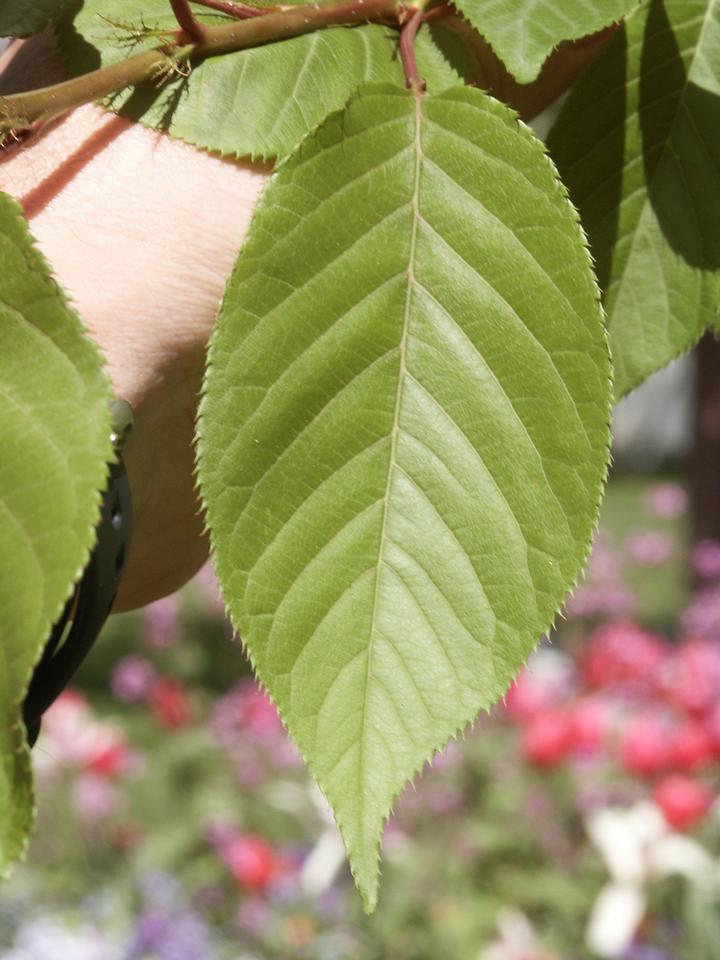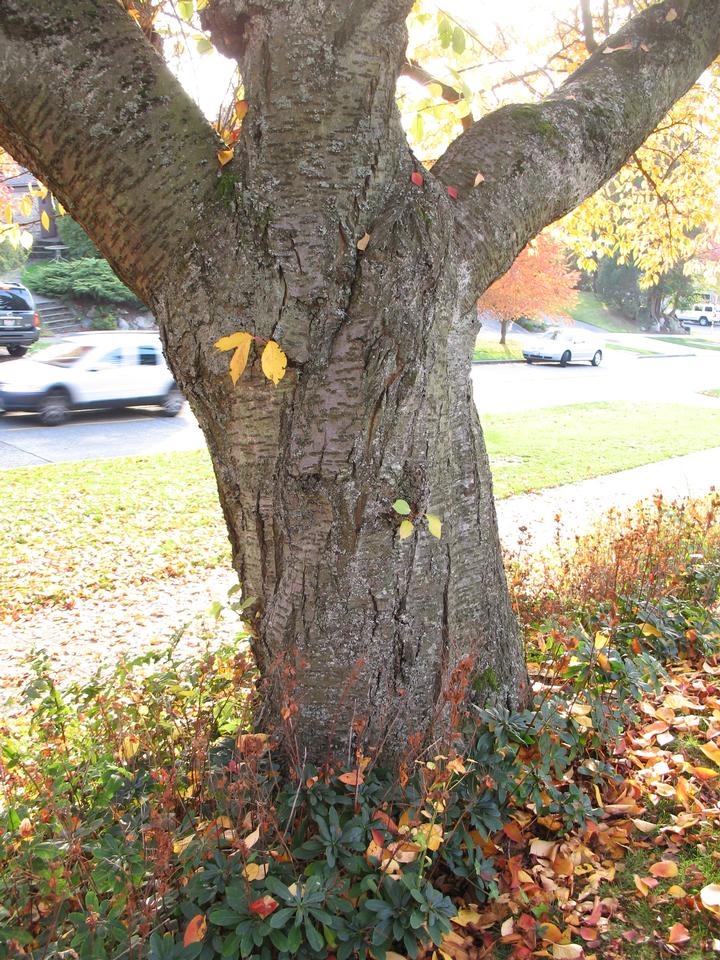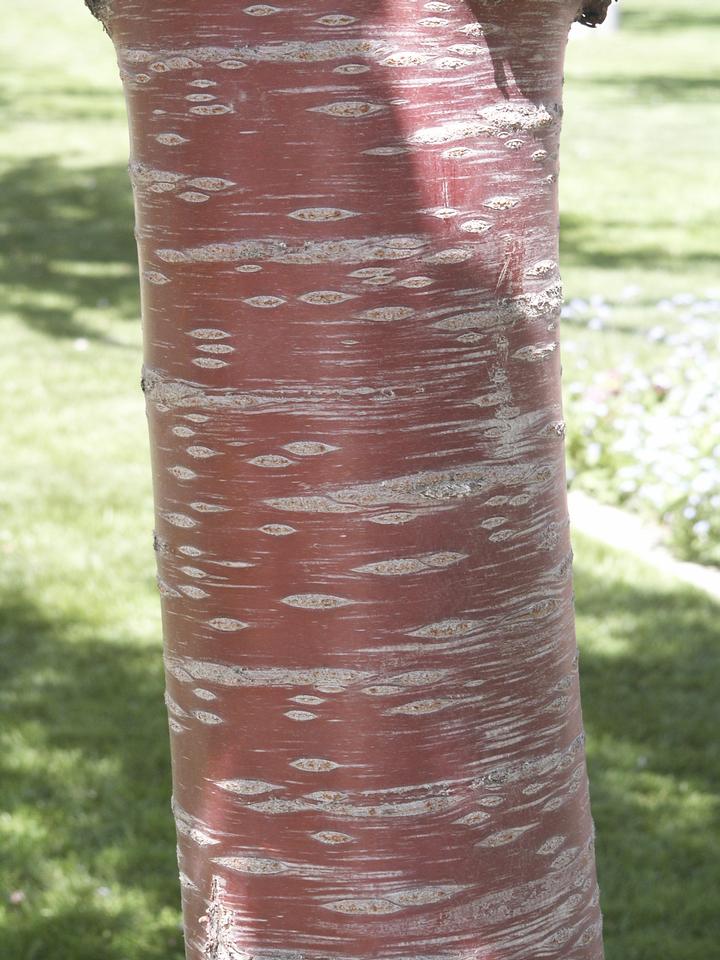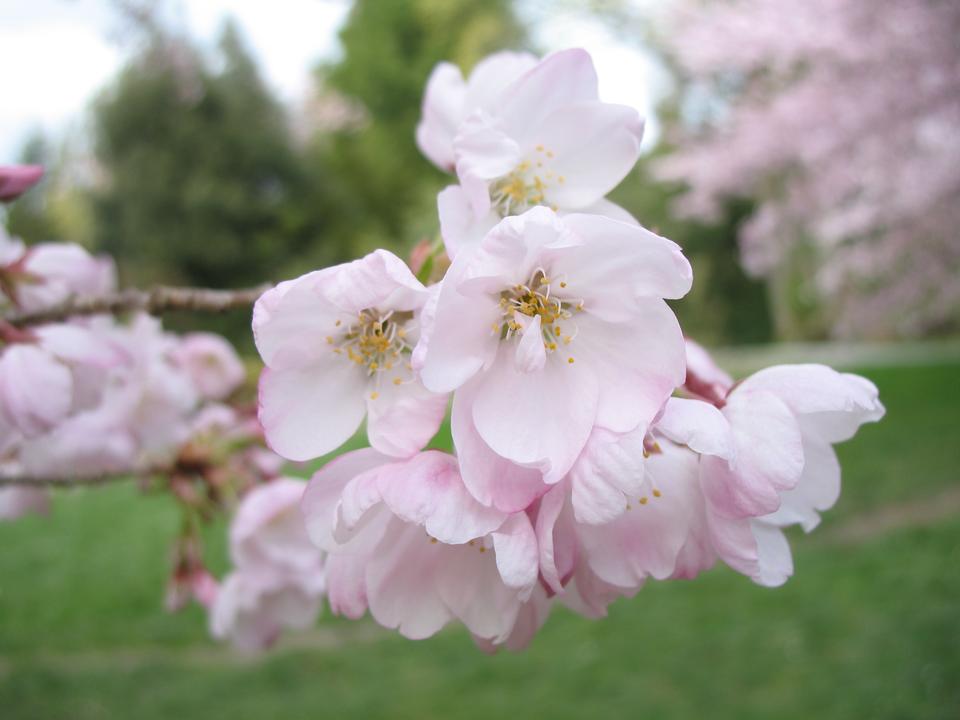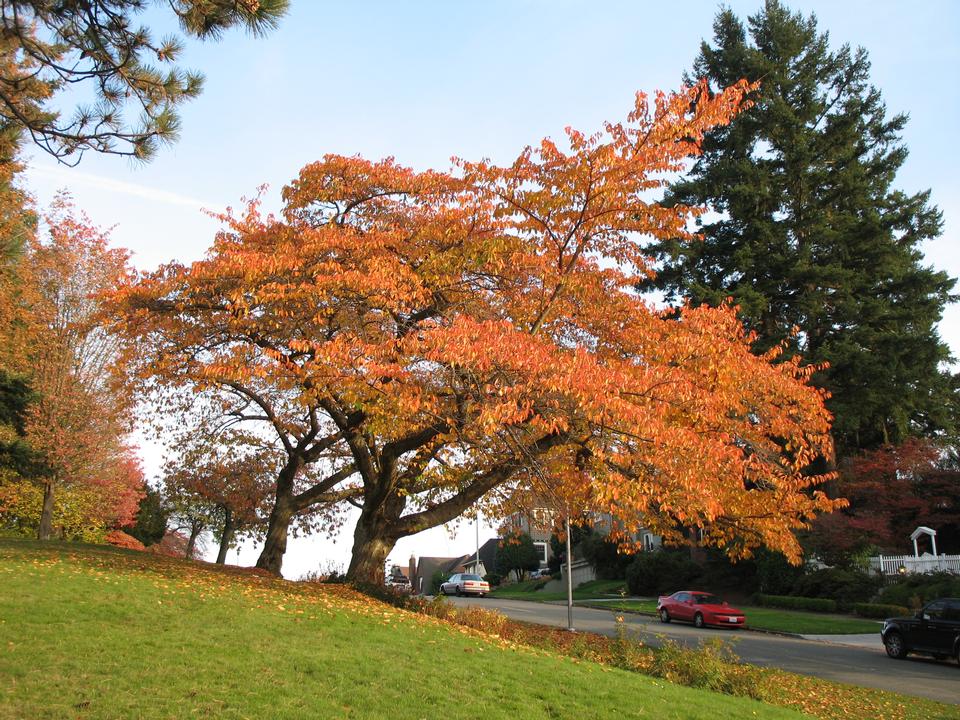Cherry, Japanese Flowering or Oriental
Prunus serrulata
Rosaceae - Rose
Description
Leaves: Alternate, simple; long, pointed tip; teeth often bristle-tipped; 2" to 5" long; deciduous; glabrous beneath; 2 to 4 glands on petiole near blade.
Twigs/buds: Twigs medium texture, reddish brown, with prominent lenticels. Buds scaly, red-brown like twig.
Flowers/fruit: Flowers perfect, pink (some cultivars white), 1/2" to 2-1/2", single or doubled, in small clusters present in April as leaves form. Fruit a small black drupe (cherry); often fruitless or nearly so.
Bark: Shiny, gray-brown, and peeling horizontally.
Wood: Used to smoke-dry bacon and ham; black knot fungus can cause swellings or galls; little information available.
General: Native to China, Japan, and Korea, with many cultivars that are commonly grown around the world for their flowers. Shade intolerant.
Landscape Use: Oriental cherry prized for its beautiful flowers. Usually grafted several feet above the ground on a sweet cherry rootstock; does better on its own roots, but may get larger. Good bronze to red fall color. Ornamental cherries have some very good characteristics, and the Prunus genus is important in the wild for wildlife. However, in cultivated landscapes Prunus species tend to have a fair amount of problems, especially with diseases. So plant what you like, but keep this in mind. Zones 5- 9.
Cultivars: 'Amanogawa', 'Autumnalis', 'Beni-Hoshi', 'Fugenzo', 'Kwanzan', 'Mt. Fuji', 'New Red', 'Ojochin', 'Okame', 'Prentice Dancer', 'Royal Burgundy', 'Shirofugen', 'Shogetsu', 'Ukon'.
Characteristics
General
| Family | Rosaceae - Rose |
|---|---|
| Cultivar Availability | Yes |
| Hardiness Zone | 5-9 |
| Type | Broadleaf |
| Utah Native | No |
Growth
| Growth Rate | Medium |
|---|---|
| Mature Height | Medium |
| Longevity | Medium |
| Is Good Under Power Lines | Yes |
| Crown Shapes | Vase |
Ornamental
| Bark | Yes |
|---|---|
| Fall Color | Yes |
| Flowers | Yes |
| Foliage | No |
| Fruit | No |
Tolerance
| Shade | Low |
|---|---|
| Salt | Medium |
| Drought | Medium |
| Poor Drainage | Low |
| Alkalinity | Medium |
| Transplanting | Medium |



